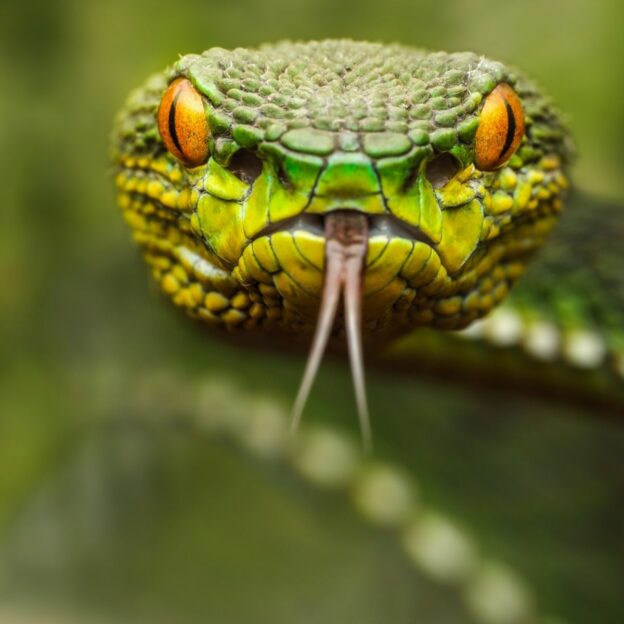The bizarre image (Bamidbar 21:9) of our ancestors gazing at a graven image — a copper representation of a snake — to end a snake-plague born of their complaining about the mon, is contextualized by a Mishneh in Rosh Hashana (29a):
“Did the snake kill, or did the snake preserve life? Rather, when the Jewish people turned their eyes upward and subjected their hearts to their Father in Heaven, they were healed, but if not, they were necrotized [by the venom].”
Which raises the obvious question: Why not eliminate the middlesnake and just look heavenward?
Rabbeinu Bachya calls attention to the word used to introduce the (real) snakes in the account: hanechashim (Bamidbar 21:6). Not “snakes” but “the snakes.” The definite article, he says, refers to the fact that these were the same reptiles that, elsewhere in the Torah (Devarim 8:15) are described as having been ever-present in the desert our ancestors wandered.
Rav Samson Rafael Hirsch expands on that observation, explaining that gazing at the copper snake was meant to sensitize the people to the constancy and ubiquitousness of snakes around them — and to the realization that when the snakes hadn’t been plaguing them until then it was because of Hashem’s protection.
As Abba Binyamin taught (Berachos 6a), “If the eye were given permission to see, no person would be able to withstand [the sight of the multitude of] the demons [that surround him].”
We moderns can easily — particularly as we emerge from a pandemic — appreciate the idea that danger — as potentially lethal as snakes and yet undetectable by our eyes — is all around us. And that every day that the immune systems Hashem gave us function and we don’t succumb to the myriad ever-present infectious dangers that surround us, we should look heavenward in thanks.
© 2021 Rabbi Avi Shafran
